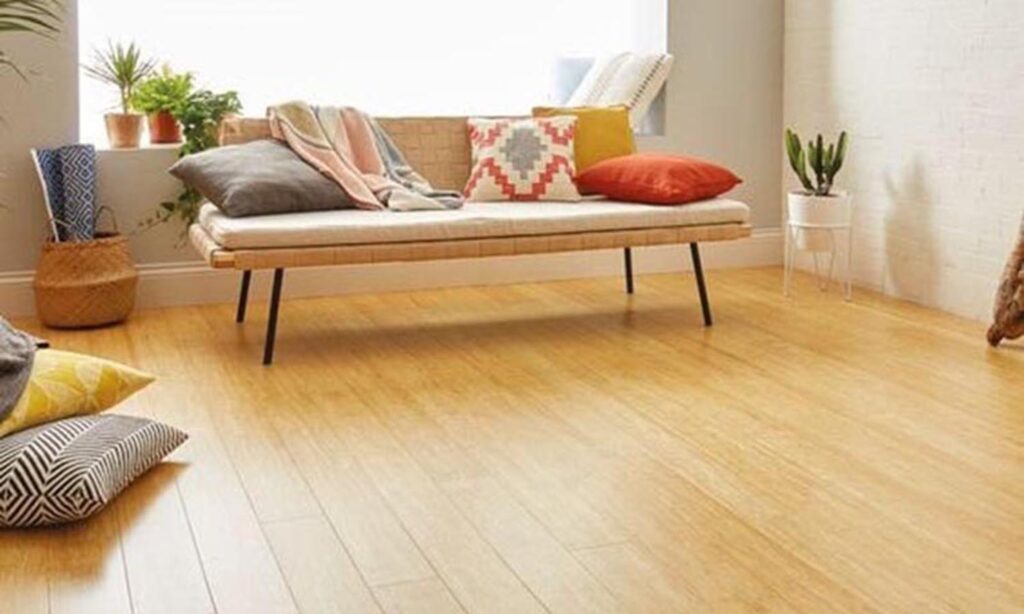The Ultimate Guide to Bamboo Flooring A Sustainable Choice for Your Home
October 13, 2024

Bamboo flooring is rapidly becoming a popular choice among homeowners looking to combine aesthetics with sustainability. As the demand for eco-friendly materials rises, bamboo’s stands out as a strong contender for flooring solutions. In this article, we’ll explore what bamboo flooring is, its benefits, installation process, maintenance, and answer some frequently asked questions.
What is Bamboo Flooring?
Bamboo flooring is made from the fast-growing bamboo plant, a grass species that can reach maturity in just three to five years. Unlike traditional hardwood, which can take decades to grow, bamboo is an environmentally friendly option that offers durability and beauty. The process of transforming bamboo into flooring involves harvesting the bamboo, cutting it into strips, and then treating it for strength and durability.
Benefits of Bamboo Flooring’s
1. Eco-Friendly
One of the primary reasons homeowners choose bamboo flooring is its sustainability. Bamboo grows quickly and requires less water than traditional hardwood trees. Furthermore, it can be harvested without killing the plant, allowing it to regenerate naturally. This makes bamboo flooring an excellent choice for those looking to minimize their environmental impact.
2. Durability
Bamboo flooring is not only sustainable but also remarkably durable. It is harder than many hardwoods, making it resistant to wear and tear. This durability makes bamboo flooring’s an excellent choice for high-traffic areas, ensuring that your floors will look great for years to come.
3. Aesthetic Appeal
Bamboo flooring offers a unique aesthetic that can enhance the look of any space. It comes in various colors and finishes, from natural golden tones to darker, carbonized shades. This versatility allows homeowners to find the perfect match for their interior design style.
4. Easy Installation
Bamboo flooring can be installed using several methods, including glue-down, nail-down, and floating installations. This flexibility allows homeowners to choose the installation method that best suits their needs and skill level.
5. Low Maintenance
Maintaining bamboo flooring’s is relatively easy. Regular sweeping and occasional mopping with a damp cloth are usually sufficient to keep it looking its best. Unlike carpets, bamboo floors do not trap dust or allergens, making them a healthier choice for your home.
Installation Process
1. Preparing the Subfloor
Before installing bamboo flooring, it’s essential to ensure that the subfloor is clean, dry, and level. Any imperfections in the subfloor can lead to problems later on.
2. Acclimation
Bamboo flooring should be acclimated to the room where it will be installed for at least 48 hours. This allows the material to adjust to the humidity and temperature of the environment, preventing warping after installation.
3. Installation
Once the bamboo flooring is acclimated, you can proceed with the installation. Depending on the method chosen, this may involve gluing, nailing, or floating the planks. It’s crucial to follow the manufacturer’s guidelines during this process to ensure the best results.
4. Finishing Touches
After installation, adding baseboards or quarter rounds can give your flooring a polished look. This step helps cover any gaps between the flooring and the walls, enhancing the overall appearance.
Maintenance Tips for Bamboo Flooring
Regular Cleaning
To maintain the beauty of your bamboo flooring, regular cleaning is essential. Use a soft-bristle broom or a vacuum with a hard floor attachment to remove dust and debris. For deeper cleaning, use a damp mop with a mild cleaner specifically designed for bamboo or hardwood floors.
Protecting from Scratches
To protect your bamboo flooring from scratches, consider using furniture pads under heavy items and avoiding shoes with hard soles. Additionally, area rugs can help prevent wear in high-traffic areas.
Humidity Control
Bamboo flooring’s is sensitive to changes in humidity. Maintaining a consistent indoor humidity level between 30% and 50% can help prevent the flooring from expanding or contracting.
FAQs About Bamboo Flooring’s
Q1: Is bamboo flooring’s suitable for all rooms?
Yes, bamboo flooring’s can be used in most rooms, including living areas, bedrooms, and even kitchens. However, it’s not recommended for areas with high moisture, such as bathrooms or basements, unless the flooring is specifically designed for such conditions.
Q2: How does bamboo flooring’s compare to hardwood?
Bamboo flooring’s is harder and more durable than many hardwoods, making it an excellent choice for high-traffic areas. Additionally, bamboo is more eco-friendly due to its rapid growth and sustainable harvesting methods.
Q3: Can bamboo flooring’s be refinished?
Yes, bamboo flooring’s can be refinished, although the process may be different than that for traditional hardwood. It’s essential to consult a professional for the best results.
Q4: Is bamboo flooring affordable?
While the price of bamboo flooring’s can vary, it is often comparable to mid-range hardwood options. The durability and low maintenance of bamboo can make it a cost-effective choice in the long run.
Conclusion
Bamboo flooring is an excellent choice for those seeking a sustainable, durable, and aesthetically pleasing flooring option. With its numerous benefits, easy installation, and low maintenance requirements, bamboo flooring’s is a practical choice for any home. Whether you’re renovating or building new, consider bamboo flooring’s for a beautiful and eco-friendly addition to your living space.